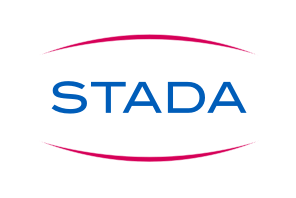Your Body
Targeted osteoporosis treatment
Each treatment of osteoporosis is different. Decisive in this regard is the patient’s physical condition and health. The doctor takes a decision on the targeted treatment after talking to the patient. Doctors have different approaches. These include treatments with and without medication.
In the case of so-called "secondary osteoporosis”, which arises because of another disease (e.g. hyperthyroidism), the doctor will treat this underlying disorder. In some cases, certain forms of medication have led to secondary osteoporosis. Usually the doctor will then switch to medication that does not negatively impact bone density.
Non-medicinal treatment of osteoporosis
What every patient suffering from osteoporosis can do for themselves and their body: sufficient exercise and the right diet. What is more, there are numerous possibilities to prevent falls.
Physical measures can provide support or alleviate pain. These include cold therapy or thermotherapy, massages and acupuncture.

Medicinal treatment of osteoporosis
Numerous active agents aimed at fighting osteoporosis are available on the market. Which active agent is the right one for a patient depends on the individual case, for example the severity of the disease and the patient's medical history.
The active agents fighting osteoporosis usually serve to help build up the bone or stop bone loss. As a general rule, this prevents deformations and fractures in the long term. The medication must usually be taken for three to five years. Included among the most commonly-used active agents or groups of active agents are:
- Bisphosphonates: Bisphosphonates are intended to prevent or stop bone loss and strengthen the remaining bone mass. The patient receives this medication in the form of tablets, an injection or by means of infusions.
- Receptor Activator of Nuclear Factor Kappa B Ligand (RANKL) inhibitor (e.g. Denosumab): The agent inhibits bone loss. Denosumab is injected subcutaneously twice a year.
- Parathormone (e.g. Teriparatide): The teriparatide agent, a "parathormone fragment", is identical to the body's own hormone, parathormone. It is the most advanced treatment method as it not only slows down the bone loss but also promotes bone formation and allows the development of new bone structures. Application method: normally, once a day, in the form of an injection.

- Selective oestrogen receptor modulators (SERMs): SERMs are designed to reduce susceptibility to fractures. They are intended for women with osteoporosis during menopause. Two of them are raloxifene and bazedoxifene, they also inhibit bone loss.
- Strontium ranelate: Strontium is stored especially in newly-developed bones. Strontium ranelates (usually in powder form) are intended for patients suffering from severe osteoporosis and with a high risk of fractures; especially for women at the end of menopause or after menopause, and for adult men who cannot use other osteoporosis medication.
With most medications for treating osteoporosis, the doctor recommends taking additional calcium and vitamin D, sometimes also fluoride.
- Calcium: Calcium strengthens the bones. The body should be provided with calcium in the context of a wholefood diet. Otherwise, dietary supplements can help.
- Vitamin D: Vitamin D allows the body to absorb calcium and integrate it in the bones. Here, the same applies as in the case of calcium – the body should get this within the context of a wholefood diet. Else, dietary supplements might also help.
- Fluorides: They increase bone density.
In many cases, other drugs are used, for example to treat acute pain or to relax muscles, so-called "muscle relaxants". Cortisone is another possible option. With some women, oestrogens and gestagens, the female sexual hormones, can help.
Surgery with osteoporosis
In patients with severe vertebral body fractures, an operation to the spine can provide relief. Some patients receive an artificial hip joint after a hip fracture.



